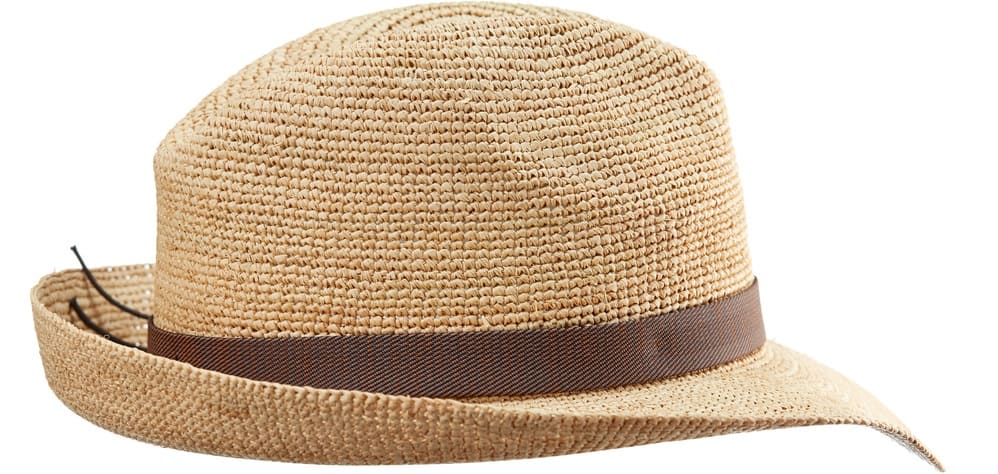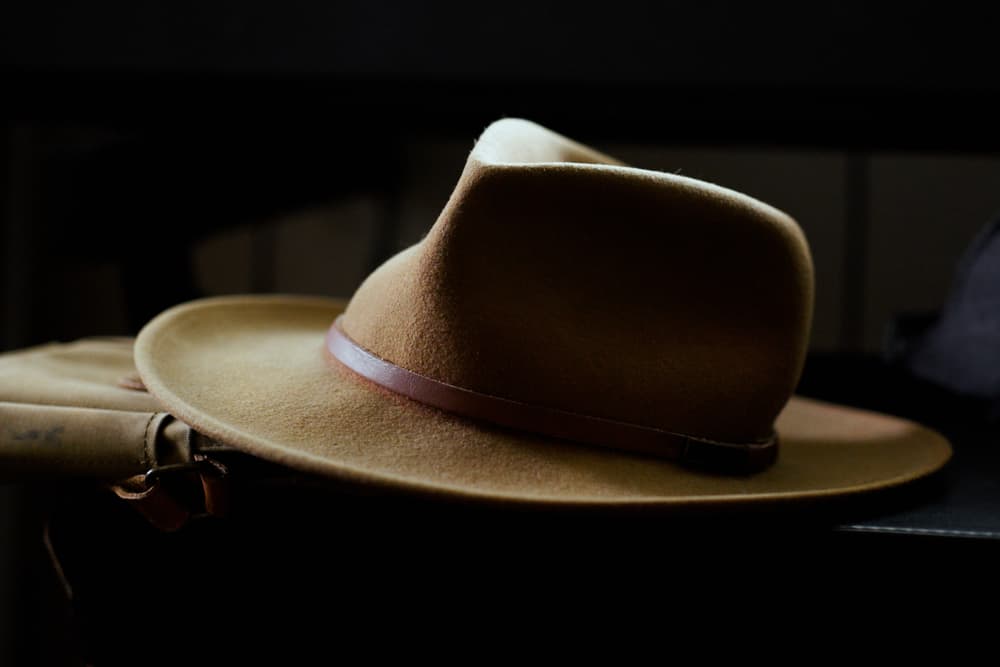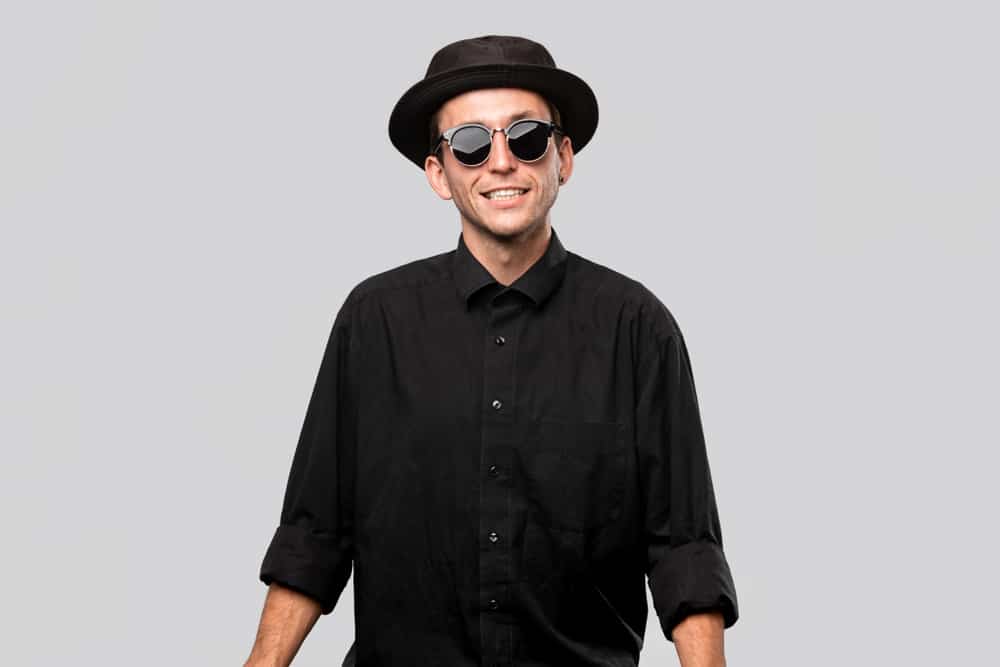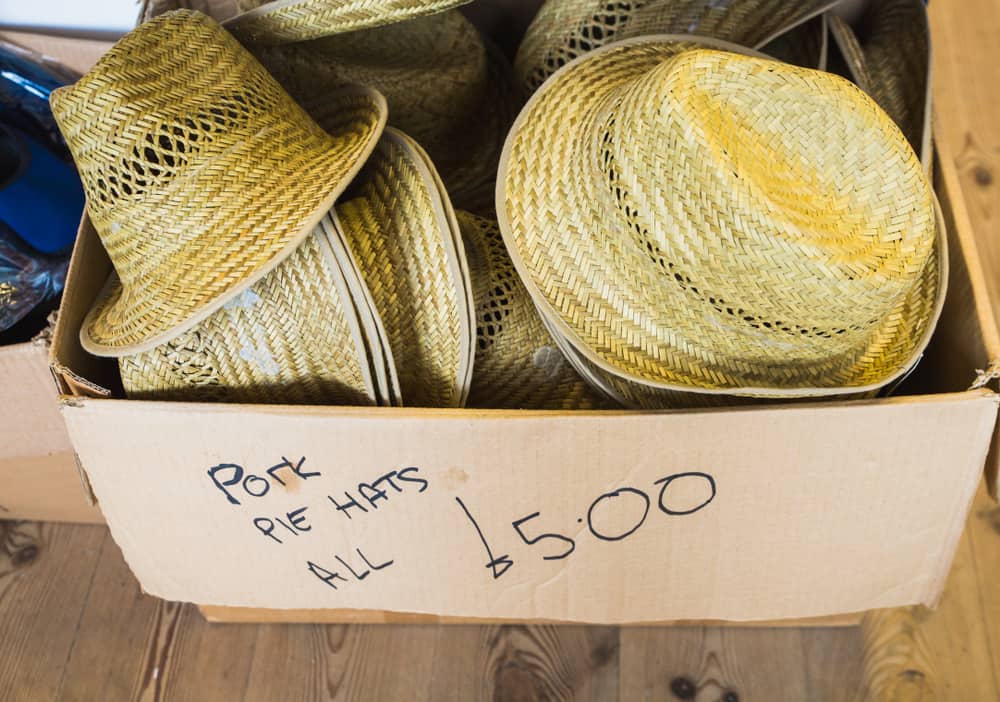The difference between a Fedora and a Pork Pie Hat is in the way they look. The highest point of a Pork Pie Hat is squeezed in, while that of a Fedora is bulging out. This is called a telescopic crown in hat designing.

In the language of the common man, a pork pie is a cheesy hat. Whereas, a fedora is a hat that makes you look like a swag foreigner. But, seriously…
Table of Contents
Fedora Hat vs Pork Pie hat
The difference between a Fedora and a Pork Pie Hat is in the way they look. The highest point of a Pork Pie Hat is squeezed in, while that of a Fedora is bulging out. This is called a telescopic crown in hat designing.
The crown’s brim is shorter, but it’s also downward and flat. Many people describe the crown-style hat as having a miserly brim. Remember that the crown of the pie hat doesn’t sit on your head as deeply as the fedora does.
The Fedora Hat and the Pork Pie Hat are a little similar in their style but different in their features. Both hats offer a wide range of colors.
Fedora Hats tend to be made from felt and can be shaped into multiple sizes, while Pork Pie Hats are made from straw and come in only one size. They both provide a flawless finish to any outfit. With their classic looks, these hats are simple to find in stores online.
The Fedora and Panama hat are a classy hat style that does go well with many types of outfits. I guess, we could say that about the stingy brim as well. The porkpie hat on the other hand does not go with a broad range of outfits and styles.
Whatever is your chosen flavor will make a great hat option for whatever you choose to wear it with!
Fedora hat traits

- A soft brim and an indented crown characterize this hat
- Both sides of the crown are pinned near the front and along its length
- Fedora hat crowns come in a variety of styles, including diamonds and teardrops.
- Crowns are approximately 4.5 inches (11 cm) tall
- There are generally 2.5 inches (6.4cm) of brim on a fedora hat.
- It is possible to leave raw edges in a brim with no finish (unfinished) or to finish them with a brim band or to fold and sew on the band or to finish them with a trim band
- Fedoras are mostly made from wool, cashmere, beaver fur, and rabbit fur
Pros:
- Can be worn for casual as well as formal occasions
- Men and women alike will enjoy this product
- Clothing of a variety of styles can be paired with it
- You can choose from many colors
- Various fabrics are available for it
Cons:
- There may be quality issues with today’s products
- Stores often don’t carry them
- When ordering online, fitting and sizing can be tricky
Pork Pie Hat Traits

- There is a pinch at the top of the crown
- Circular crease design
- Short brim pointing upwards
- Crowns tend to be shorter than fedoras
Pros:
- Tends to be made of breathable material
- Unisex style
- Comfortable to wear
- Versatility with apparel
Cons:
- Not as sturdy as other hat options
- Not always made with high-quality material
- Doesn’t always have a secure fit
The Fedora and the pork pie have different styles and structures. The Fedora is sharper with its C- the crown and pinched sides. Making it a more fashionable option.
The pork pie is a little more simple, with a flat, round crown. Depending on the fabric used it can even look a bit playful. The decision of which one to buy solely depends on the style you are trying to portray.
Fedora Hat

Fedora hats (also called a bowler hat) are felt hats with a wide brim, which was designed to shade the face from the sun. It also has pinched sides for a sharp look.
These hats were popular in western Europe and America during the late 19th and early 20th centuries. Fedora hats first reached popularity in the 1880s as a stylish alternative to top-heavy bowlers.
In 1912, the fedora became popular with men who wanted to look fashionable and different from other typical male outfits of the time. The casual, pliable style of these Fedora hats made them easy to wear with almost any outfit, whether it was rugged cowboy duds or expensive business suits.
Classic Fedora hats were popular hats of Frank Sinatra, Humphrey Bogart, and other movie stars in the 1940s. The felt hat has a unique shape and is usually made of wool felt material without wings. Usually worn in formal events, Fedora hats are still a fashion statement today.
A Brief History
The term fedora (a classy hat) comes from the title of a play written for Victorien Sardou, a Victorian-era Sardinian playwright in 1882. The show began in the United States in 1889. Bernhard played the series’ heroine, Princess Fedora. During the show, Bernhard wore a hat with a soft fringe in the center.
It was fashionable for women and adopted as a symbol of the women’s rights movement. The right hat size made it extra appealing. Worn by Prince Edward of England in 1924, this dress became famous among men for its elegance and ability to protect the head from wind and wind.
I want to talk about the history of Fedora hats. A fedora hat was originally produced in the early 20th century as a substitute for expensive hats.
Because fashion is considered a “status symbol”, it is culturally considered a symbol of wealth. Only those with few economic resources will take risks without a hat.
Because fedora hats became more popular in the mid-1920s, they were often associated with taboos and gangs. Black became popular with fedora hats in the 1940s and 1950s and continued until casual wear became popular in the late 1950s.
Fedora and Trilby hats are very popular in style and function. It does not block your view while driving and is not as high as other hat options, so you can use it on public transport. It can also be folded and stored without deformation.
As a result, the media need to be examined more closely to determine the reasons for the fedora’s steady return to fashion. Motion pictures of the 1940s and 1950s brought fedoras back into style. On TV and on stage, Humphrey Bogart and Cary Grant are among those who have worn fedora hats as a symbol of masculinity and it is through secretly wearing both of them that this trend has been renewed.
Paul Bear Bryant, the legendary school football trainer, decided to wear plaid and Hounds-tooth fedora while he remained near the sidelines of the various movements he was leading during the round. A photo of Fedora is on the front of a Time magazine, and he is wearing it on the front of the magazine.
One more mentor with whom Coach Tom Landry, the head trainer of the Dallas Cowboys between 1960 and 1988, was indebted for making the fedora an essential item of clothing for him.
The fedora was restored to the cinema by Indiana Jones in the seventies. As is the case with film, television has a significant influence on the prevalence of fedoras… reviewers visit an Indiana Jones episode where he wears them, and music fans can’t fail to remember Michael Jackson.
Where can you buy it?
You can buy them at swap meets, garage sales, and thrift stores. That is if you’re looking for something authentic to a time period it was produced in. Fedoras are currently in style can be found online in mass amounts.
Pork Pie

As far as hats go, pork pie hats have long been a popular style since the mid-19th century because of their appearance. It is not to be confused with a boater hat.
From around 1830 to 1865, the pork pie hat was known as the primary hat worn by British and American women. Round, thin brimmed hat. At the top of the crown, there is commonly a curved edge, though sometimes it may have a wrinkle running along with it, and it is frequently adorned with a ribbon or hatband around the shoulder, along the brim’s edge.
Pork pie hats were made of a variety of materials, such as straw, cotton canvas, and silk, among others. Pork pies were classified as such because of their long brims and the shape of the crown (also known as stingy brims due to their shortness).
Brief history
Pork pie hats were most popular during the Roaring Twenties straw boater period of the early 1920s. With this version, the pork pie was larger and had a snappy brim.
Because this crown had a unique shape and slightly sprang up when worn, milliners called it a “telescopic crown” or “tight telescope.” The article also mentions that all pork pie hats were either not made to be worn or were only comfortable to wear when telescoped.
A pork pie hat, with a brim that was unusually wide and a crown that was quite tall, became popular during this time period among prominent people including Frank Lloyd Wright.
In the 1940s, African Americans wore padded pork pies in the form of a zoot suit. New Guineans wore hats even in 1944.
Post-1950

As is well known, the popularity of pork pies declined after the end of World War II, but because of its association with zoot suits, it nevertheless continued to be associated with the music culture of African Americans, particularly jazz, blues, and ska.
Art Carney as Ed Norton in The Honeymooners, and Pacheco, also known as Joaqu*n Monserrat, wore one in Puerto Rico between 1951 and 1955. A new version of the pork pie hat which features a flat brim and low crown returns to its classic appearance at Buster Keaton’s movies. His straw hats and ties made him one of the original stars of several children’s television shows during the 1950s.
The Jamaican “Rude Boy” subculture brought the hat back into style and made it more accessible to the British in the 1960s, which influenced occasional appearances of the hat in the mod and rave subcultures.
One of these hats was worn by Gene Hackman’s character Jimmy the Popeye Doyle in the 1971 film The French Connection, which gave the pork pie hat a slight resurgence of popularity and exposure.
In the film, Eddie Egan, who played Doyle’s role in real life, was a fictionalized version of the real Eddie Egan who was the real police chief Eddie Egan. Throughout his life, Egan wore many hats, including pork pie hats, party hats, and wool hats.
Robert De Niro wore a pork pie hat when he was testing for the role of Joe in Mean Streets (1973), which was one of the later films he appeared in as part of his character.
Where can you buy it?
Costume shops sell them online and brick and mortar. Specialty hat shops are also a great place to look.



